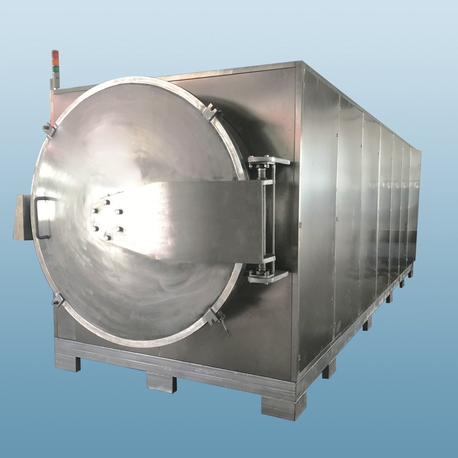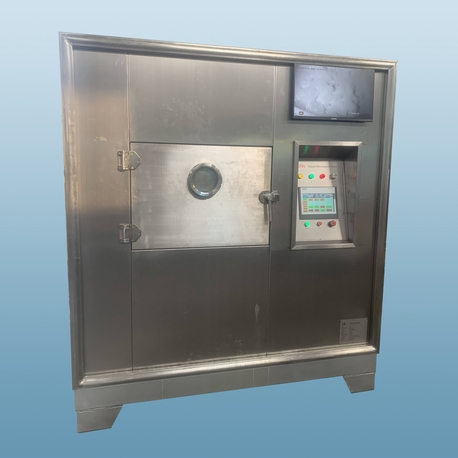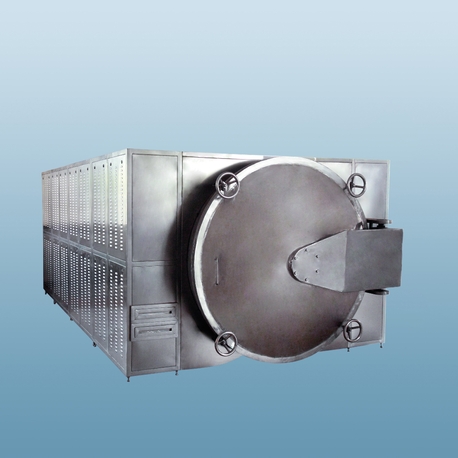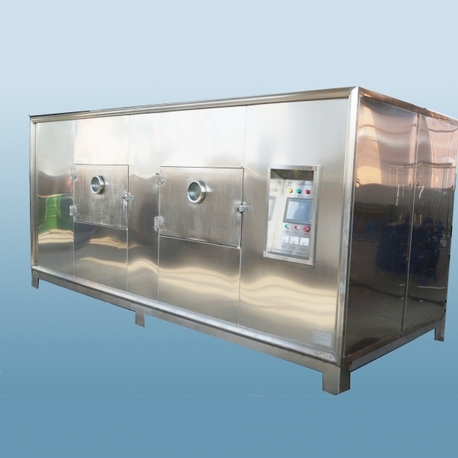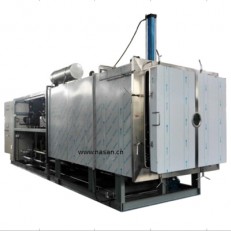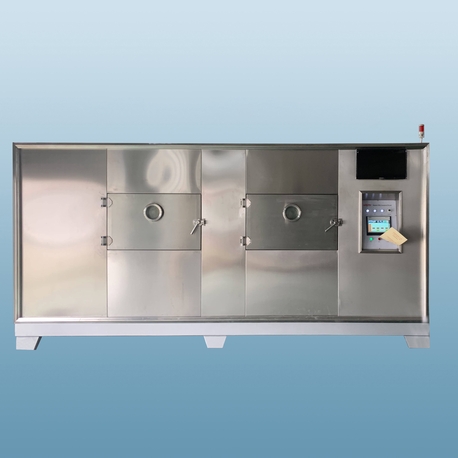The humble microwave oven, a staple in homes worldwide, operates on principles with profound industrial applications. However, a commercial microwave designed for drying, curing, or heating in an industrial setting is a world apart from its kitchen counterpart. These powerful systems are engineered for continuous operation, precision, and integration into production lines, offering unparalleled speed and efficiency in moisture removal. Selecting the right system is not merely a purchase; it's a strategic investment that impacts product quality, throughput, and the bottom line. This article delves into the seven critical factors you must consider to make an informed decision for your industrial drying needs.
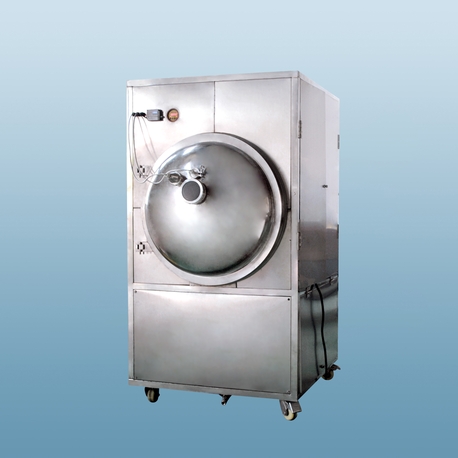
Why a Standard Microwave Won't Suit Commercial Drying
Before diving into the selection criteria, it's crucial to understand the fundamental difference. A consumer microwave heats food unevenly and is designed for short, intermittent cycles. An industrial commercial microwave dryer is built for robustness and consistency. It employs advanced waveguide technology and chamber designs to ensure uniform electromagnetic field distribution, leading to consistent and efficient drying across the entire product batch. These systems are constructed with industrial-grade components to withstand 24/7 operation in harsh environments, far exceeding the capabilities of any consumer-grade appliance.
1. Power Rating and Scalability: It's Not Just About Watts
When discussing commercial microwave systems, power is the first and most complex consideration. It's not simply about selecting the highest wattage. Power, measured in kilowatts (kW), must be matched to your material's dielectric properties, load size, and desired drying rate.
Continuous vs. Pulsed Power: Some advanced commercial microwave dryers offer pulsed power. Instead of a constant wave, energy is delivered in short, intense bursts. This can be highly beneficial for heat-sensitive materials, as it allows time for internal moisture to migrate to the surface without overheating the product's core, preventing case-hardening.
Scalability: Your needs may grow. A modular commercial microwave system that allows for power upgrades or the integration of additional units can protect your investment and provide future-proofing for increased production volumes.
2. Frequency Matters: 915 MHz vs. 2450 MHz
Most people are familiar with the 2450 MHz frequency used in consumer microwaves. However, industrial commercial microwave systems often operate at 915 MHz. The choice of frequency has significant implications:
2450 MHz: Provides a shallower penetration depth, suitable for smaller, thinner, or low-density materials.
915 MHz: Offers much deeper penetration, making it ideal for large, dense, or high-moisture content products. This frequency is often preferred for bulk drying, lumber processing, and textile curing, as it heats the core more effectively without overheating the surface.
Selecting the correct frequency is a technical decision that depends entirely on your product's physical characteristics and is best made with expert consultation.
3. Chamber and Conveyor Design for Uniformity
Achieving uniform drying is the single greatest challenge in microwave processing. A poorly designed chamber will create hot and cold spots, resulting in an inconsistent final product. Key design elements include:
Waveguide Configuration: Multiple, strategically placed waveguides ensure the microwave energy is distributed evenly throughout the chamber.
Mode Stirrers: These are rotating metal fans that reflect microwaves in different directions, constantly changing the field pattern to eliminate standing waves and improve uniformity.
Conveyor Type: The choice of conveyor belt (mesh, solid, roller) must be compatible with your product and the microwave system. It must be made of microwave-transparent or resistant materials (e.g., PTFE, fiberglass) and designed to ensure every product unit receives the same exposure.
4. Integrated Ventilation and Moisture Exhaust
As a commercial microwave system drives moisture from a product, that steam must be effectively removed. Inefficient ventilation can lead to re-condensation on the product or within the chamber, nullifying the drying effort and potentially creating a corrosion risk. A well-designed system includes a powerful and integrated exhaust system that actively pulls moist air out of the chamber, maintaining a low-humidity environment that is conducive to rapid and efficient drying.
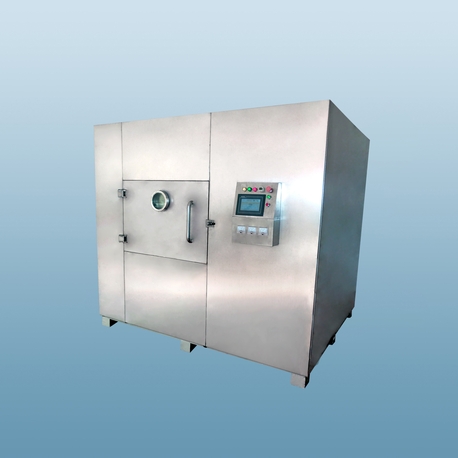
5. Control Systems and Automation
Modern industrial commercial microwave equipment is defined by its intelligence. Look for systems with Programmable Logic Controller (PLC) based interfaces. These allow operators to set and save precise recipes for different products, controlling parameters like power levels, conveyor speed, and process time. Data logging capabilities are also crucial for quality control, allowing you to track process parameters for every batch to ensure consistency and facilitate troubleshooting.
6. Safety and Regulatory Compliance
Industrial microwave systems generate significant non-ionizing radiation. A reputable commercial microwave manufacturer will prioritize safety with interlocked door systems that immediately shut off power when accessed. The unit must be fully shielded to prevent any leakage, complying with international standards such as IEC 60705 or specific regional industrial safety regulations. Never compromise on safety features.
7. Total Cost of Ownership (TCO) Over Initial Price
The initial purchase price is just one component of the total cost. A cheaper, less efficient commercial microwave can cost significantly more over its lifespan due to:
Energy Consumption: More efficient magnetrons and power supplies can lead to substantial savings on your electricity bill.
Maintenance and Downtime: Robustly built systems with readily available spare parts and strong technical support minimize costly production interruptions.
Product Yield: A system that provides better uniformity directly translates to less waste and higher product quality, improving your overall profitability.
When evaluating suppliers, focus on their ability to deliver a low TCO, not just a low initial price.
The Future of Industrial Drying: Hybrid Systems
The most advanced drying solutions often combine technologies. A commercial microwave unit can be perfectly integrated with conventional hot air or infrared dryers. In a hybrid setup, microwaves rapidly heat the product from the inside, driving internal moisture out, while the conventional system efficiently removes surface moisture. This synergy can dramatically reduce total drying time, lower overall energy consumption, and achieve a final product quality that is difficult to replicate with any single method.
Choosing the right commercial microwave for industrial drying is a multifaceted technical decision. By thoroughly evaluating these seven factors—power and scalability, frequency, chamber design, ventilation, control systems, safety, and total cost of ownership—you can move beyond basic specifications and select a system that truly optimizes your process. Partner with a supplier that demonstrates a deep understanding of your material science and production goals, ensuring your investment delivers performance, reliability, and a rapid return for years to come.
Frequently Asked Questions (FAQs)
Q1: What is the primary advantage of using a commercial microwave for drying over conventional methods?
A1: The primary advantage is speed and efficiency. A commercial microwave heats the water molecules within the product directly throughout its entire volume, drastically reducing drying times compared to conventional methods that rely on slow conduction or convection from the surface inward. This leads to higher throughput and often lower energy consumption per unit of product.
Q2: Can a commercial microwave dryer handle all types of materials?
A2: No, not all materials are suitable. Products with very low moisture content or those containing metals are generally not good candidates. Furthermore, the material's dielectric properties determine how effectively it absorbs microwave energy. A material test in a laboratory-scale commercial microwave is often recommended to determine suitability and optimal parameters.
Q3: How does the maintenance for an industrial microwave system compare to a conventional dryer?
A3: Maintenance focuses on different components. While conventional dryers require upkeep for burners, heat exchangers, and large blowers, a commercial microwave system primarily requires attention to the magnetron (the power generator, which has a finite lifespan), waveguides, and the electrical system. Overall, with no high-temperature combustion areas, maintenance can be less intensive, but it requires specialized electrical knowledge.
Q4: Are there any safety concerns specific to industrial microwave dryers?
A4: The main specific concern is exposure to microwave radiation. However, a properly designed and certified commercial microwave industrial dryer is fully enclosed with safety interlock systems that prevent operation when doors are open. Regular leakage testing is a standard part of maintenance. Standard industrial electrical safety protocols also apply to the high-voltage components.
Q5: What kind of energy efficiency can we expect from a modern commercial microwave drying system?
A5: Modern systems are highly efficient because they transfer energy directly to the material being dried, not the surrounding air. The efficiency of converting electrical energy to microwave energy in the magnetron is typically 70-85%. When this energy is absorbed directly by the water in the product, the overall system can be significantly more efficient than conventional dryers, especially for products with high initial moisture content.


